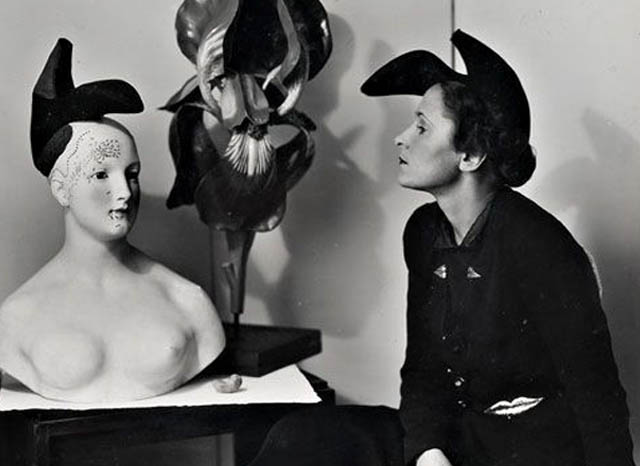
The Surrealist Touch: How Elsa Schiaparelli Transformed Fashion
Elsa Schiaparelli: The Fashion Visionary Who Dared to Dream
Few names in fashion history are as daring and unconventional as Elsa Schiaparelli. Dominating the fashion world between the two World Wars, she stood as a bold counterpart to Coco Chanel. But while Chanel saw herself as a masterful dressmaker, Schiaparelli considered herself an artist, turning fabric into wearable art.
Despite being the first Italian female fashion designer to grace the cover of Time Magazine in 1934, Schiaparelli’s name is not as widely recognized today. Yet in the 1920s and 30s, she was the undisputed queen of haute couture. Unlike Chanel’s minimalist and nautical-inspired designs, Schiaparelli’s creations were playful, surreal, and at times, downright shocking.
Schiaparelli’s – or Schiap as she referred to herself – designs show a shift in the roles of women of the time and the social revolution that inspired it. Her clothes were on one level practical and absurd at the same time. They combined form and function with sensuality and eccentricity. Her dresses were considered similar to modern canvases and works of art.
As Yves Saint Laurent once said: “She slapped Paris. She smacked it. She tortured it. She bewitched it. And it fell madly in love with her!”
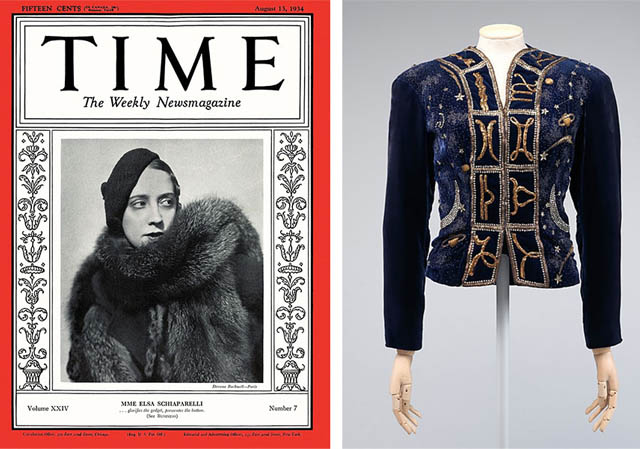
The Surrealist Connection: Schiaparelli and Salvador Dalí
Schiaparelli was heavily influenced by the Dada and Surrealist movements, working closely with artists like Jean Cocteau, Man Ray, Francis Picabia, and most famously, Salvador Dali.. Their collaborations resulted in some of the most eccentric and imaginative designs fashion has ever seen.
One of Schiaparelli’s most intriguing designs is the Shoe Hat, a playful and surreal creation she designed in collaboration with Salvador Dalí. The hat, shaped like a woman’s high-heeled shoe, features the heel standing straight up while the toe tilts over the wearer’s forehead. Among the fashionable elite who embraced this eccentric piece was Daisy Fellowes the Singer sewing machine heiress and a well-known trendsetter of the 1930s.
The inspiration for the Shoe Hat came from a photograph taken by Dalí’s wife, Gala, in which the artist posed with a woman’s shoe on his head and another on his shoulder. Dalí’s fascination with shoes was long-standing, deeply rooted in his surrealist imagination.
Dali once reflected: “All my life I have been preoccupied with shoes, which I have utilized in several surrealist objects and pictures, to the point of making a kind of divinity of them.
As a child, I once stole an old slipper belonging to my teacher and wore it as a hat during my solitary games. In 1936, I created a surrealist object using one of Gala’s slippers and a glass of warm milk. Years later, a photo of Gala crowned by the cupolas of Saint Basil rekindled my early fantasy of the ‘slipper-hat.’
That same year, I took my idea even further—putting shoes on heads. Elsa Schiaparelli then brought the vision to life, crafting the now-famous Shoe Hat, which Daisy Fellowes proudly wore in Venice.”
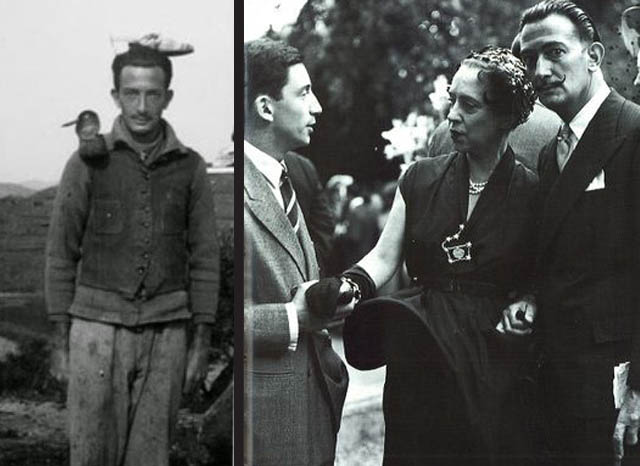
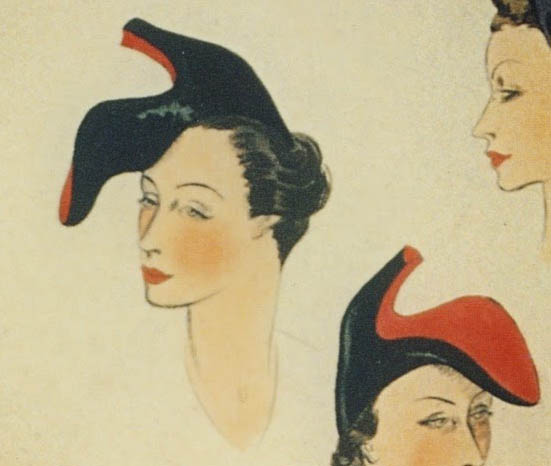
The Lobster Dress: A Surrealist Masterpiece in Fashion
In 1937, Elsa Schiaparelli and Salvador Dalí once again joined forces to create one of the most iconic and surreal fashion statements of the 20th century—the Lobster Dress. This avant-garde garment blended Schiaparelli’s bold couture vision with Dalí’s surrealist imagination, resulting in a design that was both elegant and provocative.
At first glance, the dress appears simple: a flowing white silk organza evening gown cinched at the waist with a crimson sash. However, the focal point of the dress is the large red lobster, hand-painted by Dalí directly onto the skirt. The design was inspired by Dalí’s long-standing fascination with lobsters, which often appeared in his paintings and sculptures as symbols of sensuality and eroticism.
A Mayo-Covered Lobster? Schiaparelli Draws the Line
While collaborating on the design, Dalí proposed an additional surrealist twist—he wanted to smear real mayonnaise over the lobster to enhance its absurdity. However, Schiaparelli firmly objected, unwilling to risk ruining the delicate silk fabric or introducing an overly literal interpretation of surrealism. Despite this playful disagreement, the dress maintained its dreamlike quality, capturing the perfect balance between high fashion and artistic expression.
The Duchess of Windsor & the Lobster Dress’ Instant Fame
The dress made its grand debut when Wallis Simpson, the Duchess of Windsor, famously wore it for a portrait session with photographer Cecil Beaton. Simpson, a controversial figure due to her romance with King Edward VIII (which led to his abdication), added a layer of intrigue to the dress’s legacy. The lobster’s placement on the gown—positioned suggestively near the wearer’s pelvis—fueled speculation about hidden meanings, further elevating the dress’s status as a scandalous yet sophisticated fashion statement.
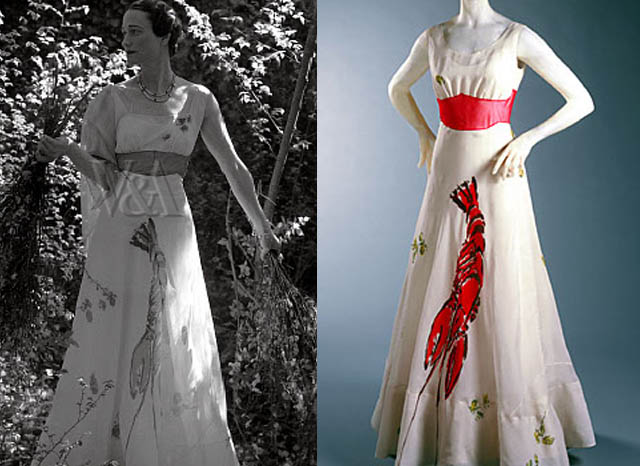
Elsa Schiaparelli invented culottes, wedge shoes, wrap dresses and turbans and popularized the color “shocking pink!”
Schiaparelli’s designs were not just fashion—they were surrealist statements that blurred the lines between art and clothing, proving that imagination truly has no limits.
Beyond these legendary pieces, Schiaparelli introduced fashion innovations that remain iconic today, including culottes, wedge shoes, wrap dresses, and turbans. Her signature color? Shocking pink—a hue she described as: “life-giving, like all the light and the birds and the fish in the world put together.”
Elsa described her signature color — shocking pink as: “Life-giving, like all the light and the birds and the fish in the world put together.”
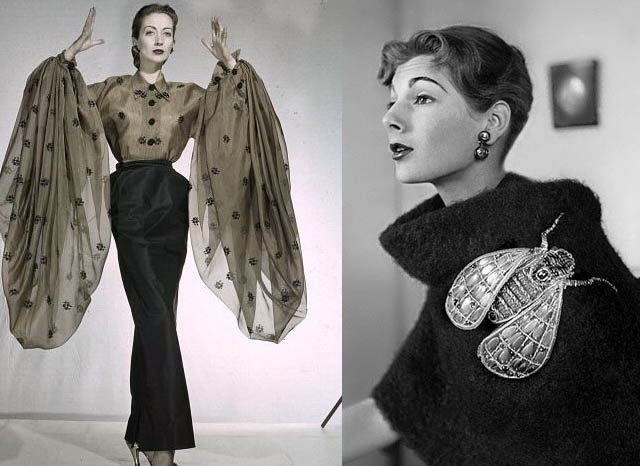
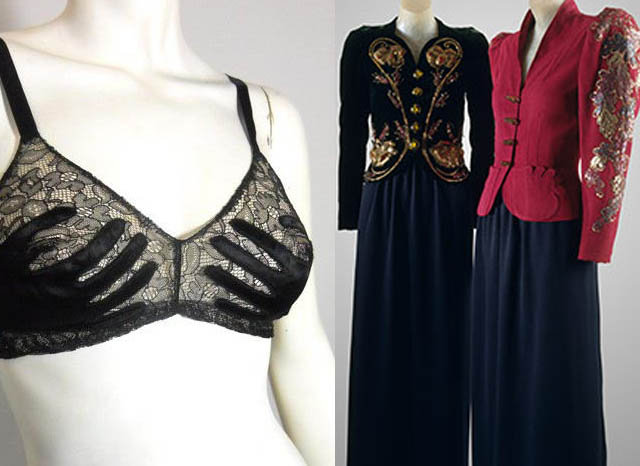
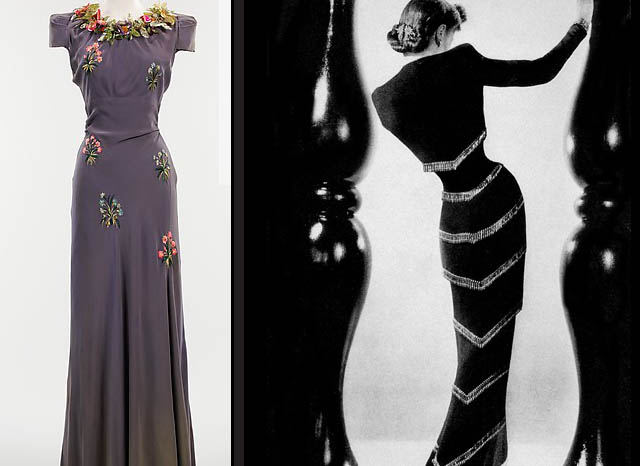
The Fall of an Icon & the Legacy of Schiaparelli
After World War II, surrealism fell out of favor, and Schiaparelli’s avant-garde aesthetic struggled to keep pace with changing trends. Allegations regarding her connections with German forces during the Nazi occupation of France further damaged her brand. By 1954, she closed her fashion house, the very same year Chanel made her grand return to the industry.
While Chanel remains a powerhouse, original Schiaparelli designs are still sought after by collectors. If you have a love for whimsical, surrealist fashion, you can even find vintage Schiaparelli jewelry and accessories on sites like eBay—affordable treasures of wearable art!
Today, Schiaparelli’s name is experiencing a revival, thanks to the reopening of her fashion house and modern designers embracing her surrealist influence. Her legacy lives on, proving that fashion is not just about clothing—it’s about art, expression, and daring to be different.
Elsa Schiaparelli didn’t just create clothing—she turned fashion into a dreamscape, a canvas, a rebellion against convention. Whether it was lobsters, shoe hats, skeleton dresses, or her signature shocking pink, she continuously pushed the boundaries of what fashion could be, leaving behind a legacy that continues to captivate and challenge the way we see clothing.
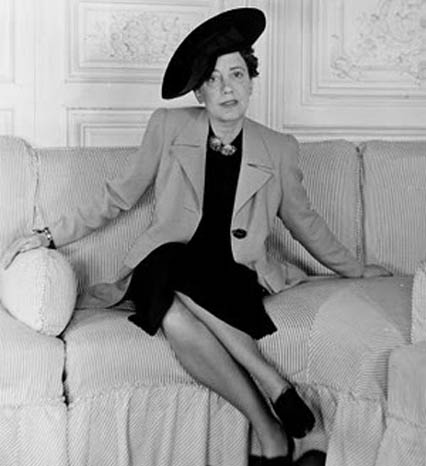
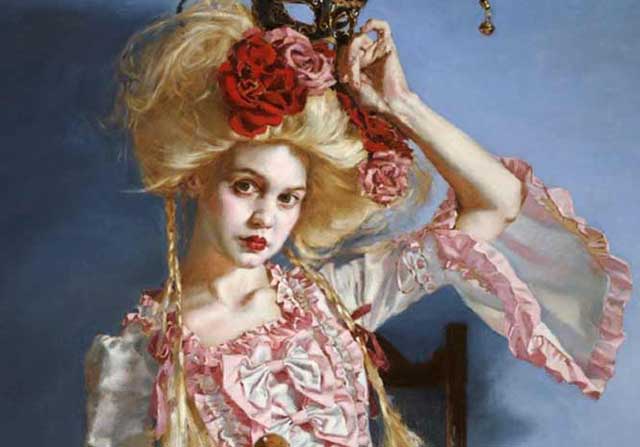
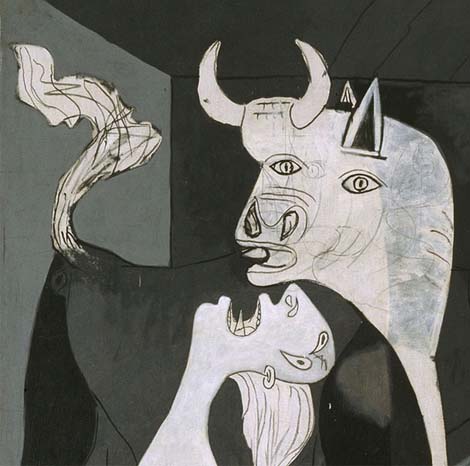
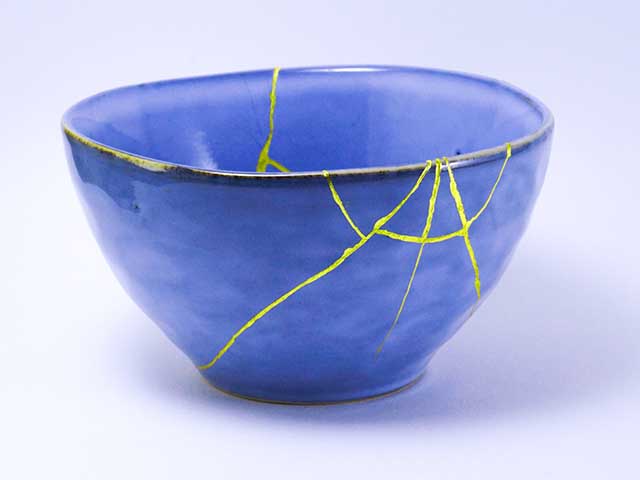
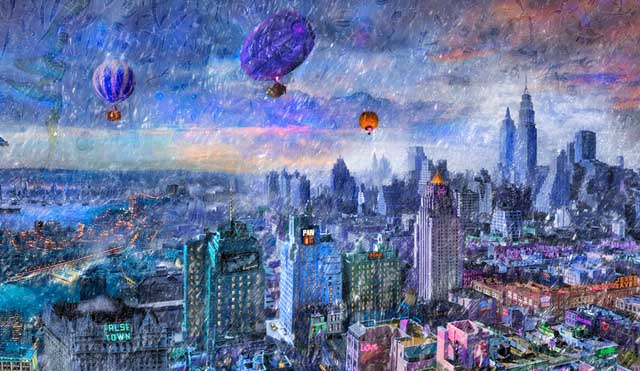
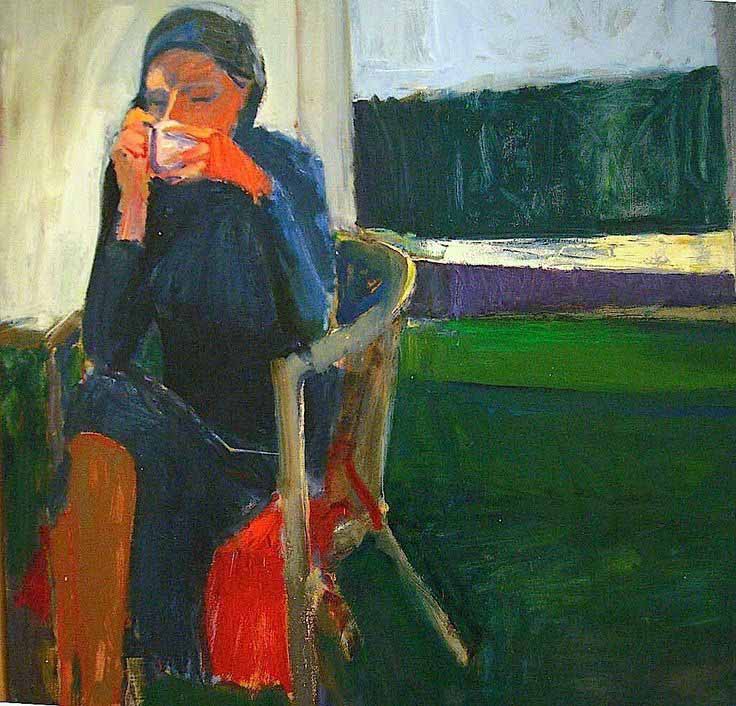
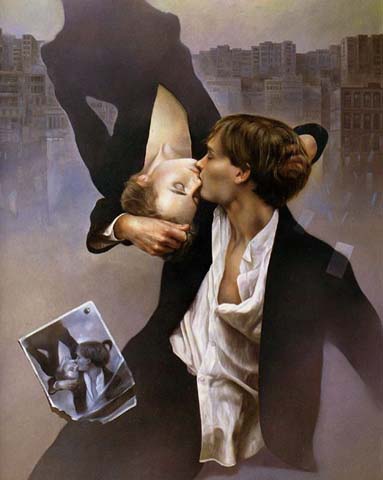
Hi there! I work for Frederic Magazine and we are very interested in a few photos in this story! Can you email me so we can discuss High-Res? Thank you!
Hello, Many of the images were found on the internet. These are the photo credits:
Elsa Schiaparelli & her “shoe hat”
New York, 1949 Elsa Schiaparelli, Shoe hat, Lisa Fonssagrives,
foto Irving Penn 1948-49 Vogue)
Elsa Schiaparelli on the cover of Time Magazine Maison Schiaparelli.
1937 Moon & Star Jacket (Courtesy Brooklyn Museum Costume Collection at The Metropolitan Museum of Art)
Elsa Schiaparelli’s iconic blouse, 1951. / Bee Sweater
Maison Schiaparelli. Daily Art Magazine
Elsa Schiaparelli’s fashion designs
(Courtesy Brooklyn Museum Costume Collection at The Metropolitan Museum of Art)
On the left: 1938 Evening Dress, Courtesy Brooklyn Museum Costume Collection at The Metropolitan Museum of Art
On the right: 1939 Gown by Schiaparelli. Photo: Andre Durst for British Vogue
1937 | Schiaparelli sketches for the shoe-hat
Pen on paper | Musée des Arts de la Mode, Paris
Source: Heavenly Soles (Abbeville Press, NY, 1989)
Elsa with Salvador Dali 1932 (According to DaliPhoto.com) |
Salvador Dalí Photograph by Gala Dalí
Wallis Simpson the Duchess of Windsor wearing the Lobster dress designed by Elsa Schiaparelli and Salvador Dalì, photographed by Cecil Beaton in Chăteau de Candé, 1937 — Courtesy of the Philadelphia Museum of Art. Daily Art Magazine